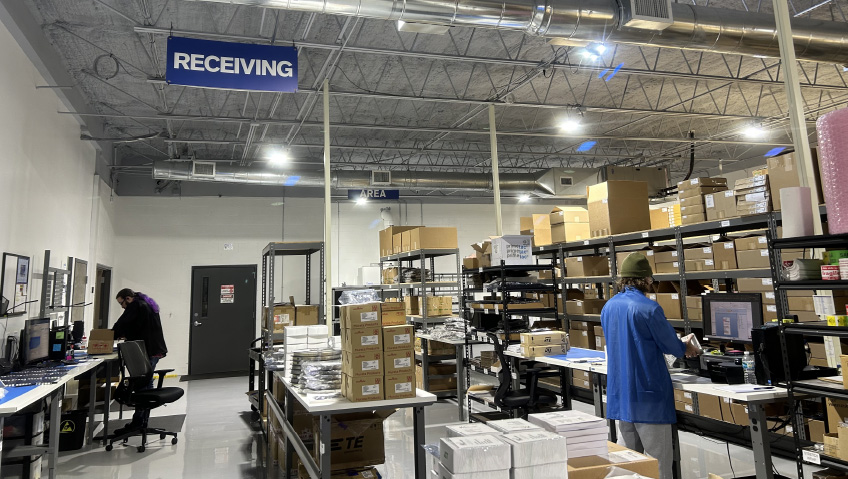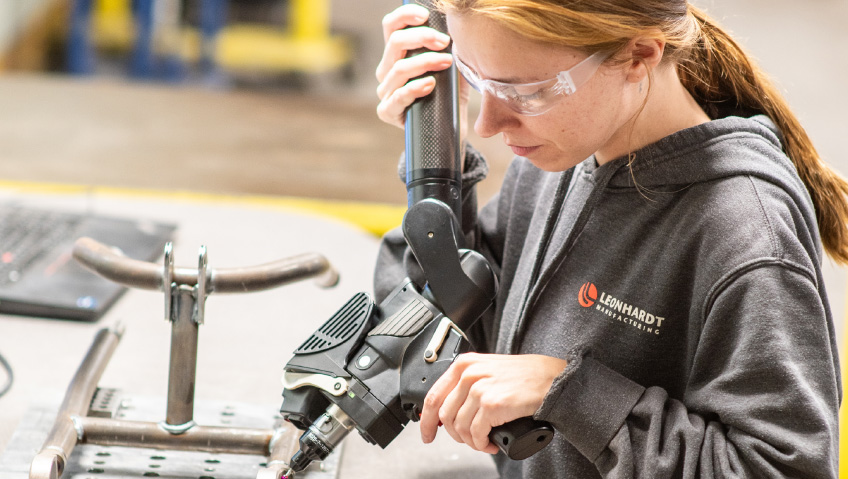Manufacturing has proven that it can withstand technological revolutions, pandemics, labour shortages, supply chain interruptions, and shortages—the list goes on and on. It’s a resilient sector that continues to demonstrate its adaptability; however, it has been slow to adopt effective diversity, equity, and inclusion (DE&I) initiatives and programs.
While many manufacturers have decided to reshore their operations, setting up domestic footprints and investing in advanced technology to support these facilities, a skills and labour shortage persists, which could be addressed by improved DE&I efforts.
It’s no secret that demand for both skilled and unskilled labour is at a high, thanks to attrition and the rapid advancement of technology. With the Baby Boomer generation retiring at a rapid pace, paired with a growing need for technologically adept skilled labour, there’s a major gap in the market and current talent pipelines aren’t satisfying demand.
As Industry 4.0 took effect, there was the hope that advanced technology could replace the need for skilled labour, and while it certainly improved rates of productivity, it shifted the demand to skills of a different nature: those necessary to operate and maintain the new technology and equipment.
Currently, there are over 500,000 manufacturing jobs vacant in the U.S., a number that’s expected to reach 2.1 million by 2030 unless greater action is taken. Nearly 80 percent of manufacturers are struggling to find talent, noting that it is harder than ever to hire.
Why all of this matters for manufacturing specifically, is the multiplier effect it has on the economy and national gross domestic product (GDP). Manufacturing has the highest multiplier effect of all sectors: for every $1 spent in manufacturing, $2.74 is added to the economy. The sector needs to be functioning optimally to have the greatest possible impact.
Global GDP would increase more than 25 percent with improved DE&I initiatives across sectors. If gender diversity, alone, was achieved and pay equity made a priority, it could add $28 trillion to the GDP by 2025.
DE&I programs are no longer “nice to haves” but rather “must haves” when it comes to operating any business. This holds especially true for the manufacturing sector, which stands to benefit exponentially from improved DE&I.
Effective DE&I programs promote employee attraction, engagement, satisfaction, and retention. DE&I reinforces stronger customer engagement and satisfaction across a broader demographic market and encourages greater rates of innovation, enhanced productivity, better decision-making and problem-solving capabilities, and increased revenue and profitability.
Given that the average U.S. unemployment rate is around eight percent, a rate that is higher amongst people of colour (POC), if these cohorts were equally engaged in the workforce, and specifically in manufacturing where they are underrepresented, many of the staffing challenges and barriers to optimal productivity and profitability could be overcome.
For manufacturers, DE&I programs make sense on a foundational level. As manufacturing is a methodical and systematic operation that’s fueled by the engineering mindset, evolving DE&I priorities could be used to drive the next era of growth and innovation in the sector.
When employers engage diversity in people, they benefit from a diversity in skills, knowledge, and experience which leads to greater rates of innovation, and better decision-making and problem-solving capabilities.
Further to improved rates of innovation, diverse companies enjoy two-and-a-half-times higher cash flow per employee and revenue can be increased by up to 20 percent more than industry median financial returns. Based on the following statistics, there’s a lot of ground to be gained.
In 2021, only eight percent of the CEO workforce of Fortune 500 companies were women, and that’s the highest it’s ever been, according to Fortune. For every 100 men promoted to management, only 86 women can say the same. And then, when women are in executive roles, they are more likely to invest in DE&I. Similarly, in 2022, only six Fortune 500 companies had a Black CEO.
Inclusivity is the pathway to diversity: you have to welcome diversity and approach these interactions with openness and an intention to achieve equity. This goes far beyond what is mandated by law and it is clear that not many companies are finding success in this regard.
By now, most companies should have invested in some foundational DE&I initiatives, but it takes more: a comprehensive program and approach to ensure company-wide adoption of the procedures and culture that go along with it. It’s becoming clear that many companies are struggling to mature their DE&I initiatives.
Luckily, support is available to manufacturers in this position. Resources are available through the National Association of Manufacturers (NAM) to ensure that manufacturers are taking advantage of the multitude of competitive advantages afforded by DE&I.
NAM board of directors unanimously approved the Pledge of Action on behalf of all manufacturers which entails a commitment to taking 50,000 tangible actions to improve equity and parity for underrepresented communities in manufacturing by 2025, including the creation of 300,000 job opportunities to improve representation.
Some steps can be taken internally to get the ball rolling. One of the best ways to launch a culture of inclusivity is to begin at the top, moving out and down. Without the leadership, all efforts to become more diverse, equitable and inclusive will fall short.
Leaders of today should be seeking leaders of the future, so when hiring, it’s important to identify talent that can grow with the company from the ground floor up, serving as convincing ambassadors for the company, the culture, and the brand.
Further, it is important to set and communicate clear talent-management goals and systems of accountability to ensure the culture is instilled at every level of the operation. This may require some operational changes to create workforce conditions that are more inclusive and attractive to traditionally underrepresented groups.
For instance, women make up more than half of the population but are underrepresented in manufacturing workplaces for a number of reasons and some of these challenges could be overcome by a change in perspective.
Part of making manufacturing more inclusive to women could require a move away from rigid hours and employee demands. When women have children to care for, these careers become next to impossible for many of them. To make industry accessible and inclusive, some actions as simple as rethinking shifts and offering flexible hours and childcare options could attract more women to the traditionally male-dominated sector.
By understanding the barriers to entry, it is easier to overcome the associated challenges. This is why it is important to get a clear snapshot of your operation and the best way to do that is by using data to understand the current state of the company, as well as monitor and measure the progress of DE&I initiatives and programs.
After instituting a DE&I program, it cannot stop there. The leadership of a company must continue to engage, involve, and evolve its employees across its operations to ensure it is always up-to-date and relevant. Doing this will ensure it is agile enough to adapt to market challenges as they arise and continue to reap the benefits of DE&I.
A DE&I program is no longer—and in truth, has never been—just the right thing to do from a moral and ethical standpoint. Across the board, DE&I programs have proven to be wise business decisions bringing competitive advantages, and should not be overlooked.
In the case of manufacturing specifically, strong DE&I will not only improve the profitability of individual operations but will also have a resounding impact on the growth and viability of the sector and the economy as a whole. It will just take a bit of the engineering mindset that is at the core of the sector to rethink how DE&I can be integrated to its full advantage.






